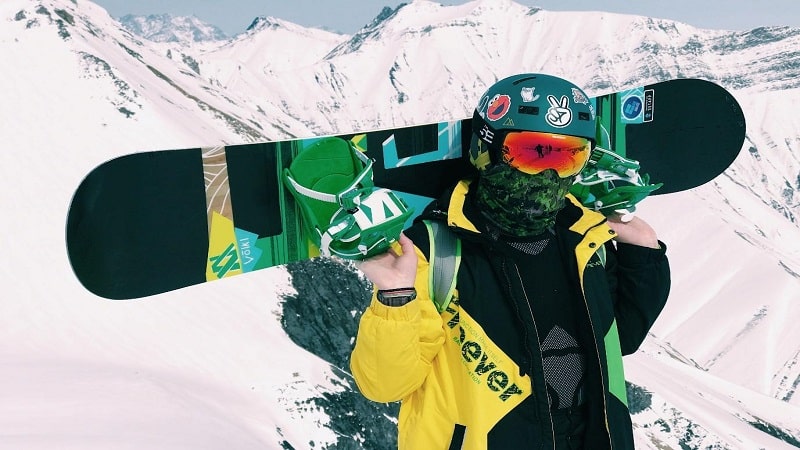Are you ready to hit the slopes and have some fun sledding? Before you can enjoy the thrill of speeding down a snowy hill, you need to know how to pack snow for sledding. Packing the snow properly can make all the difference in your sledding experience. In this article, we’ll share some tips and tricks to help you create the perfect sledding track. So grab your sled and let’s get started!
When it comes to packing snow for sledding, the first step is finding the right type of snow. Not all snow is created equal, and you want to look for snow that is moist and compact. This type of snow is ideal for packing because it will hold its shape and provide a smooth surface for sledding. Keep an eye out for areas where the snow is slightly wet or has been exposed to sunlight, as these spots tend to have the best packing snow.
Choosing the Right Snow
When it comes to sledding, finding the perfect snow is key to having a thrilling ride down the hill. As an avid snow sports enthusiast, you know that not all snow is created equal. The right kind of snow can make all the difference in your sledding experience. Here are some tips for choosing the right snow for packing:
1. Moist and Compact
Look for snow that is moist and compact. This type of snow sticks together easily and creates a solid base for your sled. It should feel slightly wet when you touch it, but not overly slushy. Moist snow is more likely to pack well and hold its shape, allowing you to build ramps and jumps for added fun.
2. Avoid Dry and Powdery Snow
Dry, powdery snow may be great for skiing or snowboarding, but it’s not ideal for packing snow for sledding. The loose texture of powdery snow doesn’t hold together well, making it difficult to form a solid sled track. It’s also more likely to get blown away by the wind, leaving you with a bumpy and uneven ride.
3. Find Slightly Wet Snow
Areas where the snow is slightly wet or has been exposed to sunlight are perfect for packing snow. The wetness helps the snow to stick together, while the sunlight helps to melt the snow slightly, making it easier to pack. Look for spots on the hill where the snow has softened due to the sun or where it has been compacted by other sledders.
4. Test the Snow
Before you start packing, take the time to test the snow. Grab a handful and try to pack it into a ball. If it easily sticks together and holds its shape, then you’ve found the right snow for sledding. If it falls apart or crumbles, keep searching for snow that is more moist and compact.
Remember, finding the right snow for packing is crucial for a successful sledding adventure. So, keep these tips in mind when you head out to the snowy hill, and get ready for an exhilarating ride down! Now let’s move on to the next section: “Packing Techniques.”
Preparing the Sledding Area
When it comes to sledding, preparation is key to ensure a fun and safe experience. Before you hit the slopes, it’s important to get the sledding area ready. Here are a few steps to take in order to create the perfect sledding spot:
1. Clear the Area: Start by clearing the area of any debris or obstacles that could pose a risk while sledding. Remove sticks, rocks, or any other objects that could potentially cause accidents. Safety should always be your top priority.
2. Create a Runway: If the snow in your chosen sledding spot is uneven or bumpy, it’s a good idea to create a smooth runway. Using a shovel or your feet, level out the snow and remove any bumps to ensure a smoother ride. This will not only enhance your sledding experience but also reduce the chances of any unexpected bumps that could send you flying off your sled.
3. Determine the Entry and Exit Points: Take a moment to identify where you will be starting and ending your sled runs. This will give you a clear path to follow and help avoid any collisions with other sledders. It’s important to establish a designated entry and exit point to maintain order and safety on the slopes.
4. Consider Safety Measures: Safety should always be a priority when engaging in any winter sport. If you’re sledding on a hill with significant height or steepness, it’s a good idea to set up barriers or markers to prevent sleds from veering off into potentially dangerous areas. Ensure that you have a clear understanding of the terrain and any potential hazards before beginning your sledding adventure.
Packing Techniques for Snow
When it comes to packing snow for sledding, the right technique can make all the difference in the world. As an avid snow sports enthusiast, you know that packing the snow properly is key to having an exhilarating and smooth ride down the hill. So, here are some tried and tested packing techniques that will help you maximize your sledding fun:
1. Body Weight Technique: One of the simplest and most effective ways to pack snow is by using your body weight. Start by standing on the snow and gently shifting your weight from foot to foot. This will compress the snow and make it more solid. You can also try jumping up and down in place to really pack it in. Remember, the harder you land, the more compact the snow will become.
2. Hand-Packing Technique: If you’re looking for a more hands-on approach, try using your hands to pack the snow. Scoop up a handful of snow and compact it tightly by pressing your hands together. Continue this process until you’ve created a solid block of snow. This technique is particularly useful for building up the sides of your sledding path to prevent you from veering off track.
3. Using a Shovel: If you have a shovel handy, it can be a great tool for packing snow. Simply scoop up the snow with the shovel and firmly press it down with the back of the shovel or your foot. This technique is perfect for quickly preparing a large area for sledding.
4. Packing with a Sled: Another fun and efficient way to pack snow is by using your sled itself. Simply hop on your sled and ride back and forth over the snow. The weight and motion of the sled will compact the snow, creating a smooth and fast surface for sledding.
Using Tools to Pack Snow
When it comes to packing snow for sledding, using tools can definitely make a difference in creating a solid surface for a smooth and enjoyable ride. Here are a few techniques you might find useful:
1. Shovels
Shovels are great tools for packing snow, especially when you’re dealing with large areas. Grab a sturdy snow shovel and start by scooping up the snow onto your sledding path. Use the edge of the shovel to tamp down the snow, applying pressure to compact it. Move along the path, repeating the process until you have a nicely packed surface.
2. Sleds
Harnessing the power of your sled can also help you pack snow efficiently. Set your sled on the snow and sit on it. Lean back and use your body weight to compress the snow. Wiggle back and forth and side to side to distribute your weight evenly. This motion can help to pack down the snow beneath the sled, creating a smoother surface for sledding. Repeat this process multiple times, progressing along the path you want to sled on.
3. Snow Shoes
If you own a pair of snow shoes, they can be a valuable tool for packing snow. Strap on your snow shoes and walk in a zigzag pattern along the area you want to pack. The larger surface area of the snow shoes helps to distribute your weight more evenly, resulting in a better packed surface for sledding.
Safety Tips for Sledding in Packed Snow
When it comes to sledding in packed snow, your safety should always be a top priority. As an avid snow sports enthusiast, I understand the sheer joy and excitement that comes with sledding down a well-packed slope. However, it’s important to ensure that you take the necessary precautions to keep yourself and others safe throughout your sledding adventures. Here are some essential safety tips to remember:
- Choose the Right Location: Before you hit the slopes, carefully select a suitable location for sledding. Look for areas that are away from roads, trees, and other potential obstacles. A clear, open space with a gentle slope is ideal for a fun and safe sledding experience.
- Inspect the Area: Take a few moments to inspect the area where you plan to sled. Look out for any potential hazards such as rocks, tree stumps, or frozen patches. Clear away any debris or obstacles to create a smooth and safe track for sledding.
- Wear Protective Gear: Just like any other winter sport, wearing the proper protective gear is essential. Make sure to wear a well-fitting helmet to protect your head in case of a fall or collision. Layer up with warm clothing to keep yourself comfortable and insulated from the cold.
- Sled Responsibly: Always sled in a controlled manner and be mindful of other sledders on the slope. Avoid sledding in overcrowded areas to reduce the risk of collisions. Maintain a safe distance from others and sled within your abilities to ensure a safe and enjoyable experience for everyone.
- Check Snow Conditions: Snow conditions can play a significant role in the safety of your sledding adventure. Avoid sledding in icy or thin snow, as it can increase the risk of accidents. Opt for well-packed snow that provides a smooth and stable surface for your sled.
Conclusion
By following these essential safety tips, you can ensure a fun and safe sledding experience in packed snow. Remember to choose a suitable location free from potential obstacles and hazards. Inspect the area before sledding to identify any potential dangers. Don’t forget to wear the necessary protective gear to keep yourself safe from injuries. When sledding, be responsible and considerate of others around you. Lastly, always check the snow conditions to ensure they are suitable for sledding.
With these tips in mind, you’ll be well-prepared to enjoy a thrilling sledding adventure in packed snow. So gather your sled, grab your friends, and head out to the slopes for a day of winter fun. Stay safe and have a blast!

















